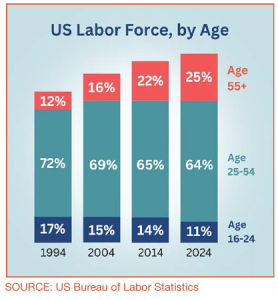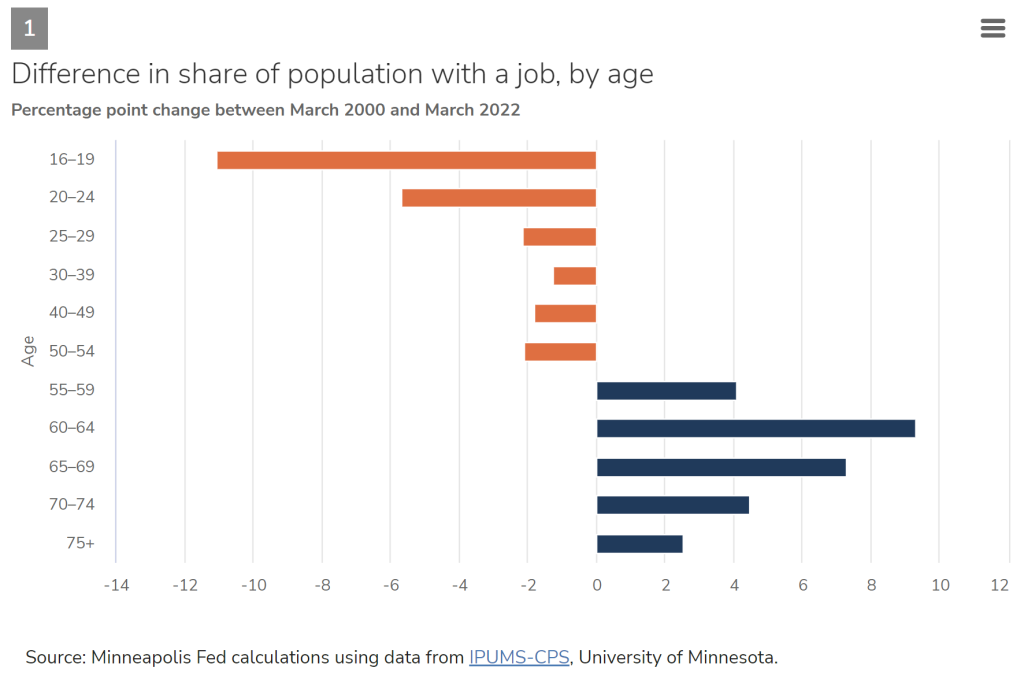Introduction:
The dynamics of the labor force are undergoing a significant transformation, as demographic trends reshape the composition of workers. In recent years, we have witnessed a shrinking younger workforce and the rise of mid-career and older workers. As we navigate the shifting demographics of the labor force, it becomes imperative to reconsider our strategies for recruiting, training, and retaining workers. This article delves into the dynamic nature of labor force demographics. By examining these changes, we gain a deeper understanding of the current workforce trends and can adapt our approaches to meet the emerging needs and opportunities in the ever-changing labor market.
The Declining Younger Workforce:
Over the past decade, there has been a notable decline in the number of younger workers entering the labor force. This trend can be attributed to various factors, including delayed entry into the workforce due to extended education, changing aspirations, and economic fluctuations. Some key statistics include:
- The labor force is expected to increase by 8.9 million, or 5.5 percent, from 2020 to 2030. The labor force of people ages 16 to 24 is projected to shrink by 7.5 percent from 2020 to 2030. Among people age 75 and older, the labor force is expected to grow by 96.5 percent over the next decade.
 The Rise of Mid-Career and Older Workers:
The Rise of Mid-Career and Older Workers:
As the younger workforce shrinks, however, we are not seeing a decline in the total workforce. On the contrary, the size of the mid-career and older workforce is increasing. This shift can be attributed to a range of factors, including longer life expectancy, delayed retirement, and a need for continued income stability. Consider the following statistics:
- The labor force participation rate of individuals aged 55 and above has been steadily increasing, reaching a projected 25% in 2024.
- Back in March 2000, more than 42 percent of 16- to 19-year-olds had a full- or part-time job. By March 2022, that was down to just 31 percent.
- Two decades ago, nearly 10 percent of 55-year-olds were retired. Today it’s 5 percent. The share of retirees at age 59 has fallen from 20 percent to 10 percent, while at the traditional retirement age of 65, less than half of Americans are now retired, against 58 percent in 2000.

Implications and Challenges:
The changing labor force demographics present both opportunities and challenges for individuals, businesses, and policymakers. Understanding these implications is crucial for effective workforce planning and addressing potential obstacles. Some key points to consider include:
Upskilling and Reskilling: In today’s rapidly evolving world, there is an urgent need to revamp how we handle workforce training. Unfortunately, older workers are disproportionately overlooked when it comes to receiving training, particularly in the realm of technology. In addition, older workers are 67% more likely to be drawn to jobs with a high risk of automation than millennials, leading them toward layoffs rather than upskilling. As technology continues to reshape industries and job requirements, it is crucial to address this issue. A recent study by the National Skills Coalition shows that, across all industries, 92% of jobs now require digital skills. By investing in comprehensive and accessible training programs specifically designed for older workers, we can empower them with the essential skills needed to thrive in the digital age. It is time to recognize the immense value that older workers bring and ensure they are equipped with the necessary tools and knowledge to actively contribute to our rapidly advancing workforce.
Workforce diversity: The evolving demographics offer an opportunity for businesses to harness the benefits of a multigenerational workforce, leveraging the unique skills and experiences of employees across different age groups.
Skills transfer and knowledge retention: As mid-career and older workers remain in the labor force, they possess valuable expertise and institutional knowledge that can be transferred to younger workers through mentorship programs and knowledge-sharing initiatives.
Age-related biases and discrimination: It is important to address age-related biases and promote inclusivity in the workplace, ensuring that mid-career and older workers are valued and provided with equal opportunities for growth and development.
Conclusion:
The changing labor force demographics paint a picture of a shrinking younger workforce and the growing prominence of mid-career and older workers. This shift carries implications for businesses, individuals, and policymakers alike. By embracing workforce diversity, promoting knowledge transfer, addressing age-related biases, and supporting effective retirement planning, we can navigate this evolving landscape and build a resilient and inclusive labor force for the future.
